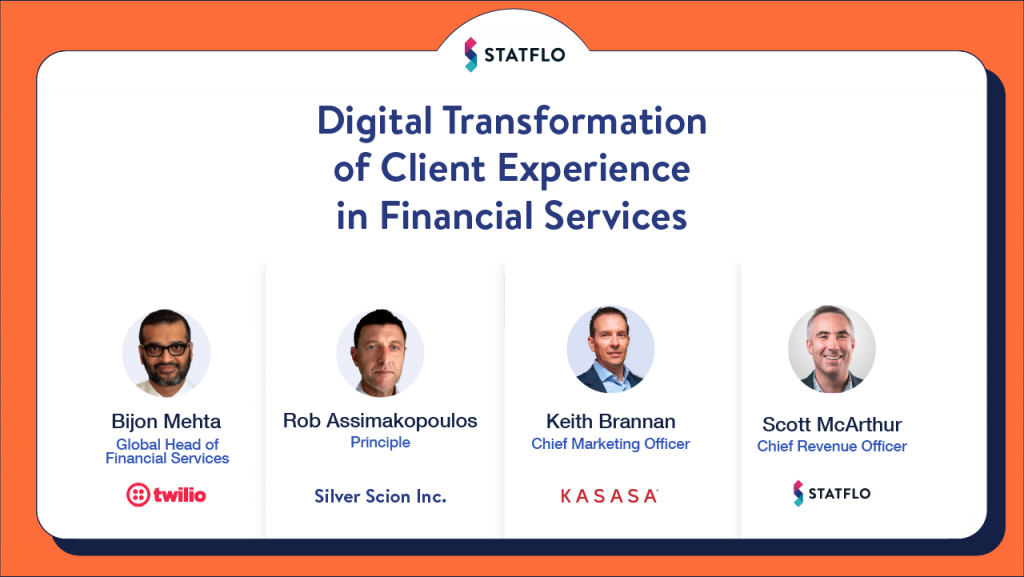Customer experience is quickly becoming the new battleground for insurance companies. The pandemic has changed the way customers interact with insurers; companies that don’t digitize their delivery, service, and communication channels will fall behind in this increasingly technology-centric world.
As this Deloitte article titled Future of Claims explains, customer retention and loyalty are at the heart of the insurance industry transformation - and both are largely driven by how the customer interacts with their insurers, specifically when it comes to the claims experience. Innovating the claims experience and using technology to implement a low-touch claims process will differentiate companies from their competition.
Though it is evident that customer engagement is a critical piece of the customer satisfaction puzzle, most companies still don’t have a concrete outreach plan in place. In fact, according to this article by EY, 44% of customers have had no interactions with their insurers during the prior 18 months. Additionally, the Elevating the insurance customer experience study by IBM reports that 60% of insurance executives agree their organization is lacking in CX strategy.
Today’s consumers are informed consumers - they carefully scrutinize all aspects of the service and compare CX not only against other insurers but against CX from other industries they interact with. And if this wasn’t enough pressure, there is an additional obstacle to creating a good customer experience in the insurance industry - interactions between insurers and customers are issue-driven. Customers only reach out to insurers when they face a problem and are already frustrated. That has a significant impact on how they rate the whole transaction. So it’s important for insurance providers to maintain a good relationship with customers throughout the whole journey, instead of only interacting with them when tensions are already running high.
Companies that regularly engage with their customers and deliver on great CX reap rewards in the form of increased net profit. According to a McKinsey study titled The growth engine: Superior customer experience in insurance, in the past five years, US auto insurance carriers that have provided customers with consistently best-in-class experiences have generated two to four times more growth in new business and about 30 percent higher profitability than firms with an inconsistent customer focus. The report suggests that this is partly because satisfied customers are 80 percent more likely to renew their policies than unsatisfied ones.
Fostering Connected Experiences
Insurtech was gaining momentum even before the pandemic accelerated digitization. According to Quarterly InsurTech Briefing, Willis Towers Watson, investments in insurtechs worldwide grew from $0.3 billion in 2003 to $5.8 billion in 2019. That means insurers are no longer only competing with other insurers - they are competing with insurtechs, fintechs, and other digital service providers. To stand out from the crowd, there’s a need for digital innovation and transformation of client experience.

The fact that 80% of customers are willing to use digital and remote channel options for different tasks and transactions shows that insurance leaders need to be equipped to evaluate and revamp their existing infrastructure. As an industry that’s traditionally been dependent on in-person interactions, it’s challenging to transition to an all-digital customer engagement process overnight. Hence, the ideal approach is to start by digitizing the most critical parts of the journey - namely claims and underwriting.
Increased technical fluency and technology-based delivery in the claims and underwriting processes are non-negotiable for the success of insurance companies. It’s no longer about starting and completing the transaction within the framework of any singular channel. Customers demand easy access to solutions and services across multiple channels and expect a seamless transition from one platform to the other.
In fact, McKinsey’s study titled The Multi-access (r)evolution in Insurance Sales identifies multi-access customers as the fastest-growing insurance segment in recent years—in 2019, every second customer was multi-access. According to the same report, the share of purely offline customers is expected to decrease from six out of ten in 2012 to just over two out of ten in 2024.
Four Tenets of CX Transformation in Insurance
1. Make it personalized, easy, and instant
The buzzwords for serving today’s customers are personalized, easy, and instant. These are the new CX standards customers measure insurers against. Let’s dive into them one by one:
Personalization is the key to delivering a stellar customer experience consistently. It implies that companies understand the needs of the customer and know how to address their concerns. One-to-one communication is the expectation of consumers across all industries, and the insurance sector is no exception. According to the Elevating the insurance customer experience study by IBM, 64% of consumers want their insurers to understand them well. The ability to tailor experiences and messaging gives providers a competitive advantage over their contemporaries. At Statflo, we help insurance companies build one-to-one relationships with their customers by integrating with their sales and marketing platforms to display customer data from any app or software. This provides customer-facing teams with a complete view of the customer’s history with the company and helps create hyper-localized campaigns to personalize customer outreach.
Ease of access is another deciding factor that plays an important role in shaping consumer opinion. As we talked about it before, when customers of insurance providers reach out to the company, they are usually frustrated. Asking them to jump through hoops in such a mindset will only create a negative impression. Making the claims filing process as low-touch and as straightforward as possible will make all the difference.
Make it instant is the last and perhaps the most crucial buzzword that affects customer experience in insurance. Its importance is highlighted by the Deloitte report titled 2021 Insurance Outlook that suggests that prospects are 20% more likely to purchase a life policy as the underwriting and application process gets closer to real-time. Any technology that can make communication instantaneous during the claims and underwriting processes is the best investment insurers can make right now.
Some of the areas that can be upgraded to make the process more real-time are using e-signatures and e-forms, leveraging instant communication channels like text message and WhatsApp, putting processes in place for digital document uploads, and making appointment scheduling accessible across all platforms. One of the features that Statflo’s one-to-one text messaging platform offers is Rich Content Experiences or Sendables. Sendables operate like a headless Content Management System and allow users to embed the best of the web in every conversation. Our clients can request payments, e-signatures, as well as send secure links, images, appointment reminders, and even start live review sessions without having to change a single tab.
2. Keep it compliant
When it comes to highly regulated industries like insurance, compliance and data security are of paramount importance. When evaluating new technology or processes, insurers are hesitant to make the switch for the fear of violating regulations. 42% of respondents in the New Horizon Report maintain that complex regulatory requirements are the biggest barrier to digitization in their insurance companies. Statflo’s compliant business text messaging platform helps companies communicate with their clients without having to worry about adherence to legal statutes as we manage opt-outs and DNCs across all channels. Our intelligent filtering feature ensures brand compliance by blocking undesirable content from being sent or received by your frontline team. Additionally, Statflo is SOC 2 Type II compliant, which means we have established protocols and met standards around data security.
3. Choose no code/less code solutions
Little to no code development IT tools allow insurers to unload some of the data security and compliance tasks to third-party providers without worrying about privacy, and compliance regulations.
Jeff Wargin, chief product officer of P&C insurance platform Duck Creek noted in one of his articles, “Low-code configuration tools allow business stakeholders – not just IT professionals – to update and manage apps and software using an intuitive, user-friendly drag and drop functionality. With moderate or even elementary app and software experience, insurers will be able to quickly implement new and different user interface (UI) features that customers demand, in a fraction of the time usually required.”
Platforms like Statflo that leverage API integrations and SDKs help insurance companies embrace new technologies without going through the hassle of extensive reconfiguration or re-coding of existing tools and systems.
4. Use automation responsibly
Insurance companies need to identify areas that are sufficiently structured to be automated. Blindly integrating AI or machine learning in every part of the process without understanding how it will impact customer experience is going to create more problems than solve. If there’s no proper strategy in place, automation can lead to technical glitches and a lack of personalization. Setting up proper workflows, sequences, and triggers is essential for the success of any automated process.
The pandemic has accelerated the adoption of virtual channels for communication and transactions. Industries traditionally dependent upon in-person interactions have been forced to adapt according to the changing consumer expectations and upgrade their technology stack to drive great CX.
Statflo helps insurance companies and retail banks foster one-to-one relationships with their customers through personalized and proactive customer outreach. Businesses leverage our compliant text messaging platform to shorten their sales cycles, effectively cross-sell/up-sell customers, and engage their customer base. For more information on how we help insurance providers personalize their customer outreach, book a demo with us!
Want to learn more? Save your seat for our upcoming webinar:
Digital Transformation of Client Experience in Financial Services

Sponsored by






